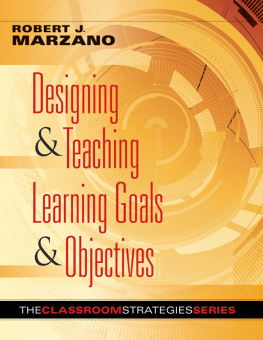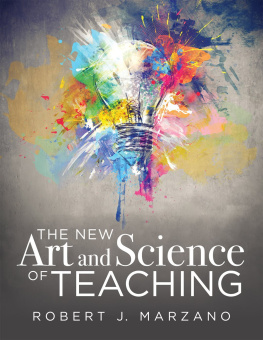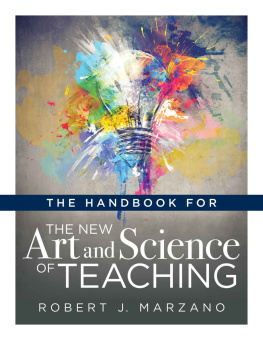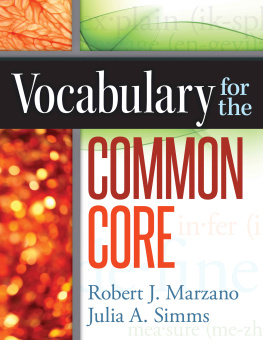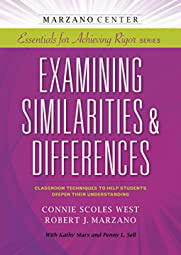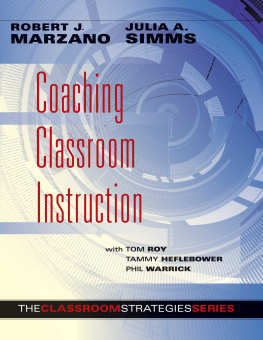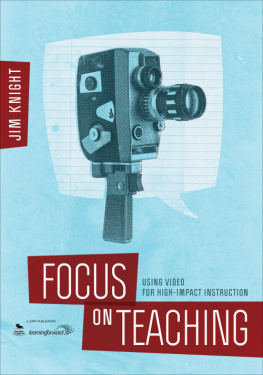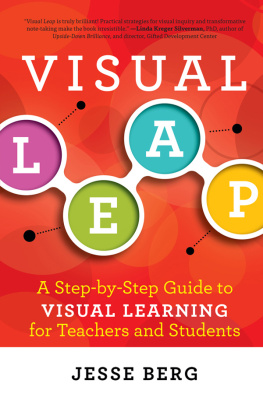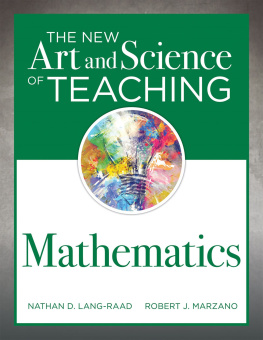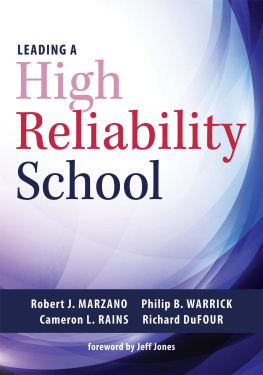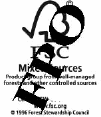Contents
Page List
Guide
Designing
& Teaching
Learning Goals
& Objectives
Copyright 2009 by Marzano Resources
Materials appearing here are copyrighted. With one exception, all rights are reserved. Readers may reproduce only those pages marked Reproducible. Otherwise, no part of this book may be reproduced or transmitted in any form or by any means (electronic, photocopying, recording, or otherwise) without prior written permission of the publisher.
555 North Morton Street
Bloomington, IN 47404
888.849.0851
FAX: 866.801.1447
email:
MarzanoResources.com
Visit MarzanoResources.com/classroomstrategies to download reproducibles from this book.
Printed in the United States of America
Library of Congress Control Number: 2009902837
ISBN: 978-0-9822592-0-7 (paperback)
978-0-9822592-1-4 (library binding)
Director of Production: Gretchen Knapp
Managing Editor of Production: Caroline Wise
Proofreader: Elisabeth Abrams
Text Designer: Amy Shock
Cover Designer: Pamela Rude
ACKNOWLEDGMENTS
Marzano Resources would like to thank the following reviewers:
Gloria Alter
Adjunct Associate Professor
Beloit College
Beloit, Wisconsin
Judy Beemer
Literacy Coach
Junction City High School
Junction City, Kansas
Heidi Legg Burros
Adjunct Assistant Professor
University of Arizona
Tucson, Arizona
Katy Lapp
Lecturer in Education and Supervisor for Secondary Student Teachers
Colorado College
Colorado Springs, Colorado
Baytoram Ramharack
Social Studies Department Chair and Teacher
Elmont Memorial High School
Elmont, New York
Sharon Roemer
Curriculum and Instruction Administrator
Lucia Mar Unified School District
Arroyo Grande, California
Marcia Sewall
Lecturer
University of California
San Diego, California
Heather Sparks
Eighth Grade Math Teacher
Taft Middle School
Oklahoma City, Oklahoma
Visit MarzanoResources.com/classroomstrategies
to download reproducibles from this book.
CONTENTS
Italicized entries indicate reproducible forms. |
ABOUT THE AUTHOR
Dr. Robert J. Marzano is the cofounder and CEO of Marzano Resources in Denver, Colorado. Throughout his forty years in the field of education, he has become a speaker, trainer, and author of more than thirty books and 150 articles on topics such as instruction, assessment, writing and implementing standards, cognition, effective leadership, and school intervention. His books include: Designing and Assessing Educational Objectives, Making Standards Useful in the Classroom, and The Art and Science of Teaching. His practical translations of the most current research and theory into classroom strategies are internationally known and widely practiced by both teachers and administrators. He received a bachelors degree from Iona College in New York, a masters degree from Seattle University, and a doctorate from the University of Washington.
INTRODUCTION
Designing and Teaching Learning Goals and Objectives is the first in a series of books collectively referred to as The Classroom Strategies Series. The purpose of this series is to provide classroom teachers and building and district administrators with an in-depth treatment of research-based instructional strategies that can be used in the classroom to enhance student achievement. Many of the strategies addressed in this series have been covered in other works such as The Art and Science of Teaching: A Comprehensive Framework for Effective Instruction (Marzano, 2007), Classroom Management That Works (Marzano, Marzano, & Pickering, 2003), and Classroom Instruction That Works (Marzano, Pickering, & Pollock, 2001). Although those works devoted a chapter or a part of a chapter to particular strategies, The Classroom Strategies Series devotes an entire book to an instructional strategy or set of related strategies.
Designing clear learning goals and objectives is a staple of effective teaching. We might even say that goal setting is a necessary condition for effective teaching. If teachers arent sure of instructional goals, their instructional activities will not be focused, and unfocused instructional activities do not engender student learning. As straightforward as this might sound, designing and teaching goals and objectives takes insight into the nature of content and the nature of learning. Designing and Teaching Learning Goals and Objectives addresses the research, theory, and practice regarding the design and use of effective goals.
We begin with a brief but inclusive chapter that reviews the research and theory on goal setting. Although you might skip this chapter and move right into those that provide recommendations for classroom practice, you are strongly encouraged to examine the research and theory because it is the foundation for the entire book. Indeed, a basic purpose of Designing and Teaching Learning Goals and Objectives and others in The Classroom Strategies Series is to present the most useful instructional strategies that are based on the strongest research and theory available.
Because research and theory can provide only a general direction for classroom practice, Designing and Teaching Learning Goals and Objectives (and each book in the series) goes one step further to translate that research into specific applications for the classroom. It is important to note, however, that individual teachers must make necessary adaptations to meet the unique needs of their students.
How to Use This Book
Designing and Teaching Learning Goals and Objectives can be used as a self-study text that provides an in-depth understanding of how to design and teach classroom goals and objectives. As you progress through the chapters, you will encounter exercises. It is important to complete these exercises and then compare your answers with those in the back of the text. Such interaction provides a review of the content and allows you to examine how clearly you understand it.
Designing and Teaching Learning Goals and Objectives may also be used by teams of teachers or by an entire faculty who wishes to examine the topic of designing and teaching learning goals in depth. When this is the case, teacher teams should do the exercises independently and then compare their answers in small group and large group settings.
Chapter 1
RESEARCH AND THEORY
Before addressing the research and theory on goals and objectives, it is useful to consider the issue of terminology. The terms goals and objectives have been used by different people in different ways. For some, the term goal applies only to the overarching purpose of curriculum, and the term

